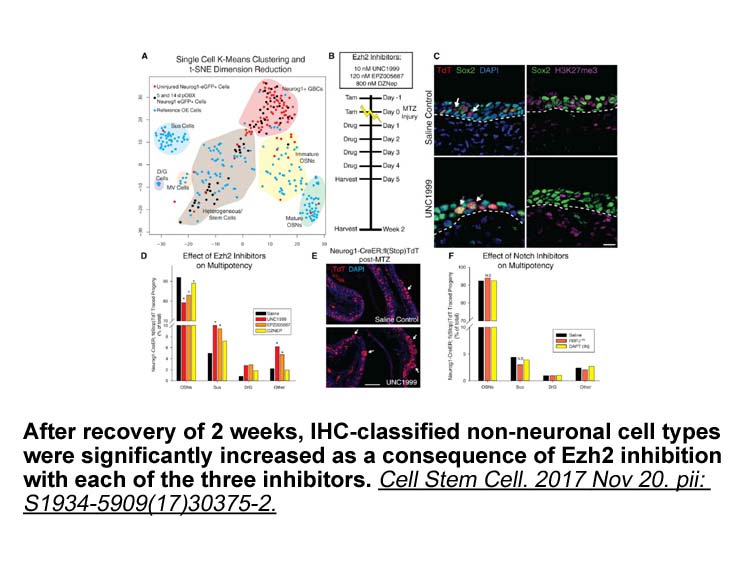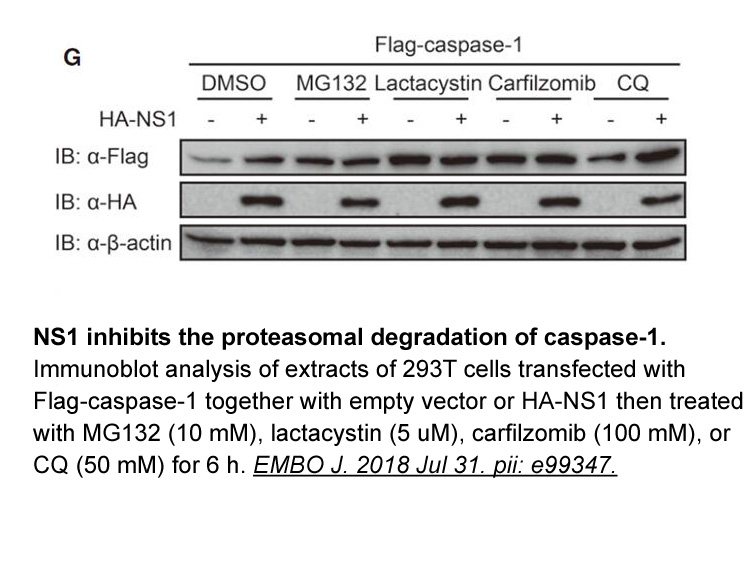Archives
- 2025-12
- 2025-11
- 2025-10
- 2025-09
- 2025-03
- 2025-02
- 2025-01
- 2024-12
- 2024-11
- 2024-10
- 2024-09
- 2024-08
- 2024-07
- 2024-06
- 2024-05
- 2024-04
- 2024-03
- 2024-02
- 2024-01
- 2023-12
- 2023-11
- 2023-10
- 2023-09
- 2023-08
- 2023-06
- 2023-05
- 2023-04
- 2023-03
- 2023-02
- 2023-01
- 2022-12
- 2022-11
- 2022-10
- 2022-09
- 2022-08
- 2022-07
- 2022-06
- 2022-05
- 2022-04
- 2022-03
- 2022-02
- 2022-01
- 2021-12
- 2021-11
- 2021-10
- 2021-09
- 2021-08
- 2021-07
- 2021-06
- 2021-05
- 2021-04
- 2021-03
- 2021-02
- 2021-01
- 2020-12
- 2020-11
- 2020-10
- 2020-09
- 2020-08
- 2020-07
- 2020-06
- 2020-05
- 2020-04
- 2020-03
- 2020-02
- 2020-01
- 2019-12
- 2019-11
- 2019-10
- 2019-09
- 2019-08
- 2019-07
- 2019-06
- 2019-05
- 2019-04
- 2018-07
-
Although it was shown that IL signaling induces expression
2019-10-14

Although it was shown that IL-23 signaling induces expression of T17 pathogenic signature genes through activation of STAT3,, transcription factors other than STAT3 are also implicated for induction of pathogenic T17 cells because IL-6, which activates STAT3 similarly to IL-23, cannot induce IL-23R
-
Upon assembly of HLA tetramers loaded
2019-10-14

Upon assembly of HLA tetramers loaded with either of the two peptide versions, we could query the T cell repertoires of RA subjects and healthy individuals for the presence of cognate T (R)-(+)-Etomoxir sodium salt mass recognizing the respective peptide-HLA complexes. We found no significant diffe
-
TraM is one of two transfer proteins from pIP
2019-10-14

TraM is one of two transfer proteins from pIP501 T4SS that have structural similarity to the A. tumefaciens VirB8 protein (Fercher et al., 2016, Goessweiner-Mohr et al., 2013), a central member of the inner membrane complex (Bailey et al., 2006, Guglielmini et al., 2014, Trokter et al., 2014). VirB8
-
Though the physiological roles of microglia derived elastase
2019-10-14

Though the physiological roles of microglia-derived elastases in the CNS are not well understood, their involvement in the metabolism of cholecystokinin [41] and in the processing of plasminogen to produce a low molecular weight plasminogen that enhances neurite outgrowth has been reported [38]. Exp
-
Multivariate models take interactions between cytokines into
2019-10-14

Multivariate models take interactions between cytokines into account and were used to accurately distinguish samples from different time points in pregnancy. The distinction accuracy did not increase with increasing time between the gestational time points, indicating that the cytokine development d
-
br Discussion EFTs are sarcomas with almost undifferentiated
2019-10-14

Discussion EFTs are sarcomas with almost undifferentiated histologic features, consequently their differentiation from other small, blue, round cell tumors may be difficult. Substantial intracellular inos inhibitor on PAS stain is a useful diagnostic feature. The addition of CD99 and FLI1 immuno
-
br O GlcNAcase Human OGA is a
2019-10-14

O-GlcNAcase Human OGA is a multidomain protein with an N-terminal domain similar to glycoside hydrolase family 84 (GH84) enzymes, a stalk domain, a C-terminal pseudo histone acetyltransferase (HAT) domain, and several low-complexity regions (Figure 1f) [43]. A splice variant that lacks the HAT do
-
Ultrasound is an acoustic wave with a frequency kHz
2019-10-14

Ultrasound is an acoustic wave with a frequency >20 kHz that needs a medium to propagate [20]. Accompanied by the spread of an ultrasonic wave, a series of alternating cycles of compression and rarefaction emerge in the liquid medium. During the rarefaction cycle, microbubbles are formed because of
-
Diagnosis of NCC can be
2019-10-14

Diagnosis of NCC can be accomplished via imaging techniques and serological confirmatory testing. The best immunodiagnostic test for NCC, the enzyme-linked immunotransfer blot EITB (Tsang et al., 1989), is based on the detection of endothelin receptor antagonists to one or more of the 7 lentil-lecti
-
In accordance with its original
2019-10-14

In accordance with its original discovery, EBI2 may play its major role in response to viral infections or in a pathological context such as in autoimmunity. Although we found a significant delay of onset in the Th17 transfer EAE model, active EAE was unchanged in absence of EBI2. At the moment, we
-
At this stage it is still
2019-10-14

At this stage it is still difficult to assign specific domains to some of the regions observed in these structures, although some attempts have already been made (Brewerton et al., 2004). Clearly, higher resolution data is needed. In the future, even if an atomic structure of DNA-PKcs is determined,
-
Recent studies have shown arsenic could
2019-10-14

Recent studies have shown arsenic could cause autophagic cell death in malignant cells, including leukemia and malignant glioma Spironolactone kinase [16], [17]. However, at present, little is known about the consequences of arsenic-treated urothelial cells in autophagy and expression of its relate
-
Taking into account that a PFOS inhibits CRF
2019-10-14

Taking into account that: (a) PFOS inhibits CRF gene expression as well as CRF and corticosterone secretion (Pereiro et al., 2014); (b) CRF1r mediates the stimulation of the pituitary ACTH secretion by this neuropeptide (Rivier et al., 2003); (c) corticosterone regulates its own synthesis by a negat
-
To analyze EBI expression and its function in T
2019-10-12

To analyze EBI2 expression and its function in T cells in vivo, we created an EGFP reporter/knockout mouse strain, termed EBI2EGFP. This mouse strain in heterozygous configuration allows for a systematic analysis of the expression of EBI2 in distinct cell types in steady-state and under inflammatory
-
Carmofur br Conclusion br Conflict of interest br
2019-10-12

Conclusion Conflict of interest Acknowledgments The authors extend their appreciation to the Deanship of Scientific Research at King Saud University for funding the work through the research group project No. RGP-120. Introduction Methods Results Conclusions Introduction Pat
15720 records 957/1048 page Previous Next First page 上5页 956957958959960 下5页 Last page